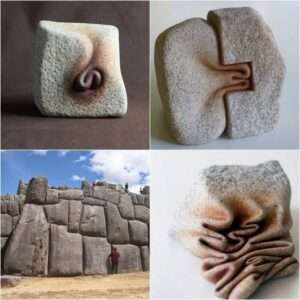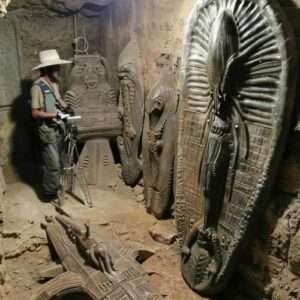Must Farm, situated near Peterborough, England, has earned the moniker “Britain’s Pompeii” due to its exceptional state of preservation. Dating back to approximately 850-800 BC, this Bronze Age settlement met its demise in a devastating fire, which ultimately led to its remarkable conservation in river silt, effectively creating a fascinating time capsule of ancient life.
The site showcases several roundhouses constructed on stilts above a river channel. Ironically, the catastrophic fire that ravaged the settlement played a vital role in its preservation. As the burning structures collapsed into the water below, the oxygen-free environment prevented decay, ensuring the survival of invaluable artifacts.
Archaeologists unearthed a treasure trove of everyday objects at Must Farm, shedding light on the lives of its ancient residents. Among the discoveries were textiles, wooden utensils, pottery still holding food remnants, glass beads, bronze tools, and intact wheel-made pots. What sets Must Farm apart is its ability to offer a snapshot of domestic existence during the Bronze Age.

Evidence indicates that the settlement was in its infancy when disaster struck, with the artifacts showcasing a surprisingly sophisticated lifestyle. The inhabitants possessed refined tableware, specialized tools, and equipment for textile production. The preserved remnants of their last meals, which included fish, meat, and breadcrumbs, provide invaluable insights into the daily life of Bronze Age Britons.
In essence, Must Farm stands as a testament to the resilience and ingenuity of our ancient ancestors. The site not only offers a window into a bygone era but also serves as a reminder of the fragility of human existence. As we marvel at the preserved remnants of a civilization long past, we are reminded of the interconnectedness of human history and the enduring legacy of those who came before us.





